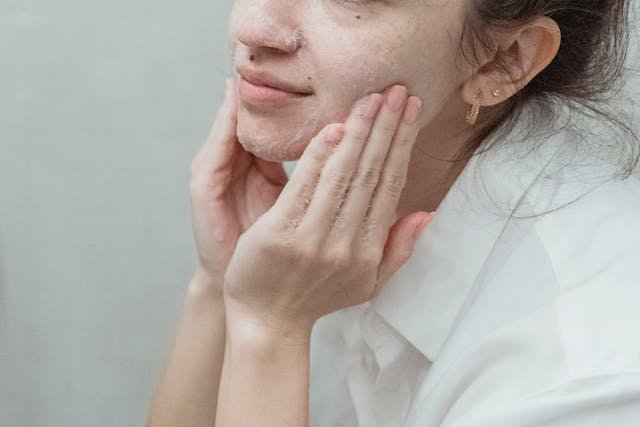
Microneedling has gained popularity as a preferred method for achieving smoother and healthier skin, delivering noticeable enhancements with little recovery time. However, if you have skin that reacts easily or feels irritated by new products, it is crucial to proceed with this procedure cautiously.
Having sensitive skin doesn’t exclude microneedling as an option—it simply requires more careful and thoughtful preparation. Properly preparing from the onset can make the process more comfortable and lead to more satisfying results.
Learn how to ready yourself for microneedling if you have sensitive skin to ensure the best possible experience.
Communicate Clearly With Your Provider
Sensitive skin may respond unpredictably to microneedling, so it’s vital to establish clear expectations with your provider in advance. Sharing pertinent information enables them to adjust the treatment to your skin’s requirements.
To enhance the safety and effectiveness of your session, consider discussing the following during your consultation:
-
Disclose Your Full Skin History: Inform your provider of any past treatments, allergies, or skin reactions, even if they were minor. This information provides insights into potential irritants and helps prevent unwanted skin reactions.
-
Discuss Current Conditions: If you’re dealing with acne scars, rosacea, or heightened skin sensitivity, be sure to mention these. Such factors can influence how your provider determines microneedling’s depth and intensity.
- Inquire About Their Approach to Sensitive Skin: Some estheticians use specific techniques tailored to delicate skin. Asking about this upfront helps reassure you about their treatment methods.
For optimal experiences, seek microneedling treatments from certified estheticians in advanced clinical settings. Select professionals who specialize in sensitive skin and can tailor their approaches accordingly.
Avoid Harsh Skincare Products
In the days leading to your microneedling appointment, focus on keeping your sensitive skin calm and balanced. Harsh products can compromise your skin barrier, risking irritation during or after the procedure.
Avoid these products and ingredients before your session:
-
Pause Retinoids and Chemical Exfoliants: Ingredients like retinol, glycolic acid, and salicylic acid can thin the skin’s outer layer and make it more reactive. Stop using these at least 3–5 days in advance to maintain your skin’s integrity.
-
Avoid Foaming and Astringent Cleansers: These products often contain harsh chemicals that strip moisture from the skin. Use a gentle, non-foaming cleanser instead to maintain natural balance.
- Skip Makeup Removers with Alcohol: Products high in alcohol content can dry and irritate the skin. Opt for oil-based or micellar cleansers that remove products gently.
Giving your skin a break from aggressive products reduces the irritation risk, helping it stay calm and ready for microneedling.
Maintain Consistent Hydration
Proper hydration is crucial for skin health, especially when preparing for microneedling. It helps keep your skin resilient, reduces irritation risk, and enhances the treatment’s overall effectiveness.
Consider these key hydration tips:
-
Use a Barrier-Enhancing Moisturizer: Look for products with ceramides, glycerin, and hyaluronic acid, which strengthen your skin’s barrier. These components lock in moisture and protect your skin from irritation.
-
Moisturize Morning and Night: Regular moisturizing maintains hydration levels, keeping the skin smooth and flexible. It ensures your skin is prepared to handle microneedling’s minor trauma, aiding recovery afterward.
- Stay Hydrated: Internal hydration is as vital as topical moisture. Drink water throughout the day to support skin elasticity and reduce dryness or irritation during the procedure.
Keeping your skin hydrated contributes to a balanced environment, supporting both the microneedling process and recovery.
Reduce Sun Exposure and Avoid Tanning
Sensitive skin can be more susceptible to UV damage, so protecting it before a microneedling session is essential. Sun exposure or tanning increases irritation and hyperpigmentation risk and can disrupt the healing process.
Follow these essential steps:
-
Avoid Direct Sunlight: Stay out of the sun for at least 3–5 days before the procedure. UV rays can cause damage, increasing irritation during and post-microneedling.
-
Skip Tanning Beds and Self-Tanners: These can make the skin vulnerable to damage and cause uneven pigmentation, increasing sensitivity.
- Use Sunscreen Daily: Apply a mineral sunscreen with SPF 30 or higher, even when indoors. Sun protection minimizes inflammation and speeds up recovery.
Shielding your skin from the sun before microneedling preserves its integrity and enhances healing capabilities, delivering the best results.
Concluding Thoughts
Microneedling remains viable for sensitive skin, given the right preparation. Avoid harsh ingredients, maintain hydration, protect from the sun, and communicate with your provider to ensure the best experience. These steps help you achieve smoother, healthier skin with minimal irritation.





